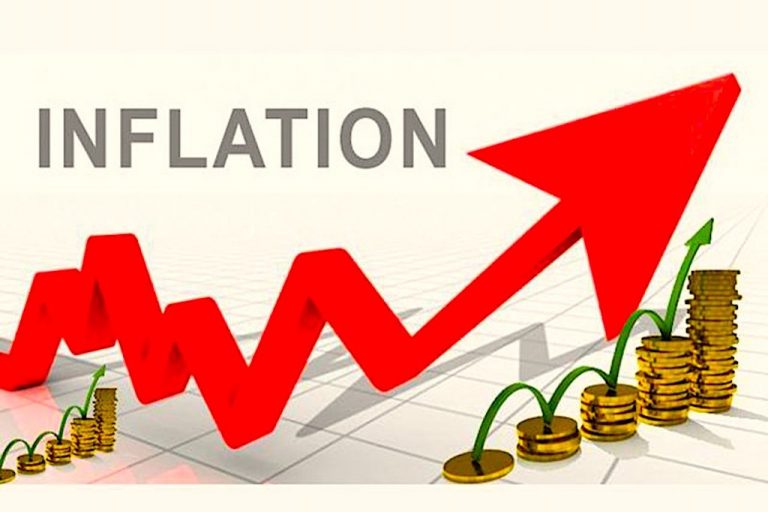Nigeria’s inflation rate experienced a slight decline, falling to 22.97% in May 2025 from 23.71% in April 2025, according to the National Bureau of Statistics (NBS). This represents a decrease of 0.74 percentage points, marking a notable slowdown in the rising cost of goods and services. The NBS attributed this primarily to a slower pace of price increases, with the month-on-month inflation rate dropping to 1.53% in May from 1.86% in April. The year-on-year figure shows an even more dramatic drop, from 33.95% in May 2024 to 22.97% in May 2025, a decline of 10.98 percentage points. The NBS attributed this sharp annual drop to the rebasing of the Consumer Price Index (CPI), which changed the comparison baseline. Despite the decline, inflation remains a significant concern, with the ongoing rise in prices, albeit at a slower pace, continually eroding purchasing power and impacting the cost of living for Nigerians.
The decline in inflation was primarily driven by a moderation in the pace of price increases across various sectors. Food inflation, a major component of the overall inflation rate, experienced a substantial year-on-year decline, dropping from 40.66% in May 2024 to 21.14% in May 2025. This signifies a considerable slowdown in the growth of food prices, offering some respite to consumers. However, on a month-on-month basis, food inflation actually increased slightly, rising from 2.06% in April to 2.19% in May. This uptick was driven by increases in the prices of several staple foods, including yam, cassava, maize flour, sweet potatoes, fresh pepper, and ogbono, indicating that food prices, though rising at a slower annual pace, are still subject to fluctuations and upward pressure.
The organized private sector, represented by its chairman, Dele Oye, expressed skepticism about the NBS’s reported inflation figures. They questioned the validity of the reported decrease, citing the unchanged prices of goods and services in the market. Oye called on the government to provide more specific details about the supposed price reductions and identify the specific goods and services driving the decline. The disconnect between the official statistics and the lived experiences of businesses and consumers highlights a potential gap in data collection or interpretation, potentially due to factors such as regional variations or specific market segments not fully captured in the NBS data. This underscores the importance of transparency and detailed reporting to build confidence in the official figures and provide a clearer picture of the inflationary landscape.
A deeper dive into the inflation data reveals variations across different geographical areas and consumption categories. Urban inflation, while still high at 23.14% year-on-year, saw a significant decline from 36.34% in May 2024. Rural inflation followed a similar trend, dropping from 31.82% to 22.70% year-on-year. These decreases indicate a broader slowdown in price increases across both urban and rural areas. On a monthly basis, urban inflation increased slightly, while rural inflation slowed down considerably. Core inflation, which excludes volatile items like food and energy, also decreased both annually and monthly, suggesting that underlying inflationary pressures are easing. This multi-faceted view of inflation, considering different geographical locations and consumption baskets, provides a more nuanced understanding of the price dynamics at play.
The breakdown of inflation drivers further illuminates the factors contributing to price changes. Food and non-alcoholic beverages remained the largest contributors to headline inflation, accounting for 9.20 percentage points. Other significant contributors included restaurants and accommodation services, transport, housing (including utilities), and education. This highlights the persistent impact of rising food and essential service costs on the overall cost of living. Regionally, Bayelsa, Bauchi, and Borno recorded the highest monthly increases in headline inflation, while Kaduna, Jigawa, and Edo experienced the steepest declines. Similar regional variations were observed in food inflation, with Borno, Bayelsa, and Taraba experiencing the highest annual increases, while Katsina, Rivers, and Kwara saw the slowest increases. These regional discrepancies underscore the uneven impact of inflation across the country and highlight the need for targeted interventions to address specific regional challenges.
Despite the reported slowdown in inflation and the substantial year-on-year drop attributed to the CPI rebasing, the underlying reality for many Nigerians remains challenging. Persistent monthly increases in the prices of food and other essential commodities continue to strain household budgets and erode purchasing power. The skepticism expressed by the organized private sector further underscores the need for continued efforts to control inflation and mitigate its impact on the population. While the rebasing provides a statistical adjustment, it does not alleviate the tangible financial pressures faced by individuals and businesses. Addressing the root causes of inflation and implementing effective policies to stabilize prices remain crucial to improving the economic wellbeing of Nigerians and fostering sustainable economic growth.














